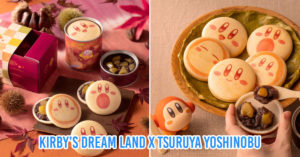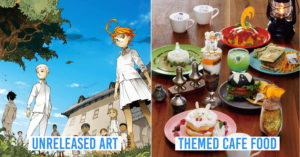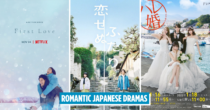Things to do in Kawagoe, Saitama
Located 30 minutes away from Ikebukuro in Tokyo, Kawagoe is a quaint city affectionately dubbed “Little Edo”. The city is populated with pristine historic clay-walled warehouse-style buildings that are a must-visit for history buffs.
Kawagoe is the perfect destination for a leisure day trip away from Tokyo. Spend your day strolling through its historic streets, munch on local sweet potato snacks, and have a go at improving your love luck at the city’s famous matchmaking shrine.
1. Kurazukuri Ichibangai Shopping Street
Experience a taste of Japan in the Edo period – 1600s to 1800s – as you walk down Kurazukuri Ichibangai Shopping Street (川越一番街商店街), which is lined with kurazukuri (historic clay-walled warehouses) on both sides.
Once home to companies supplying goods to Tokyo, the buildings now host a variety of shops that sell local goods and souvenirs, as well as meals and snacks.
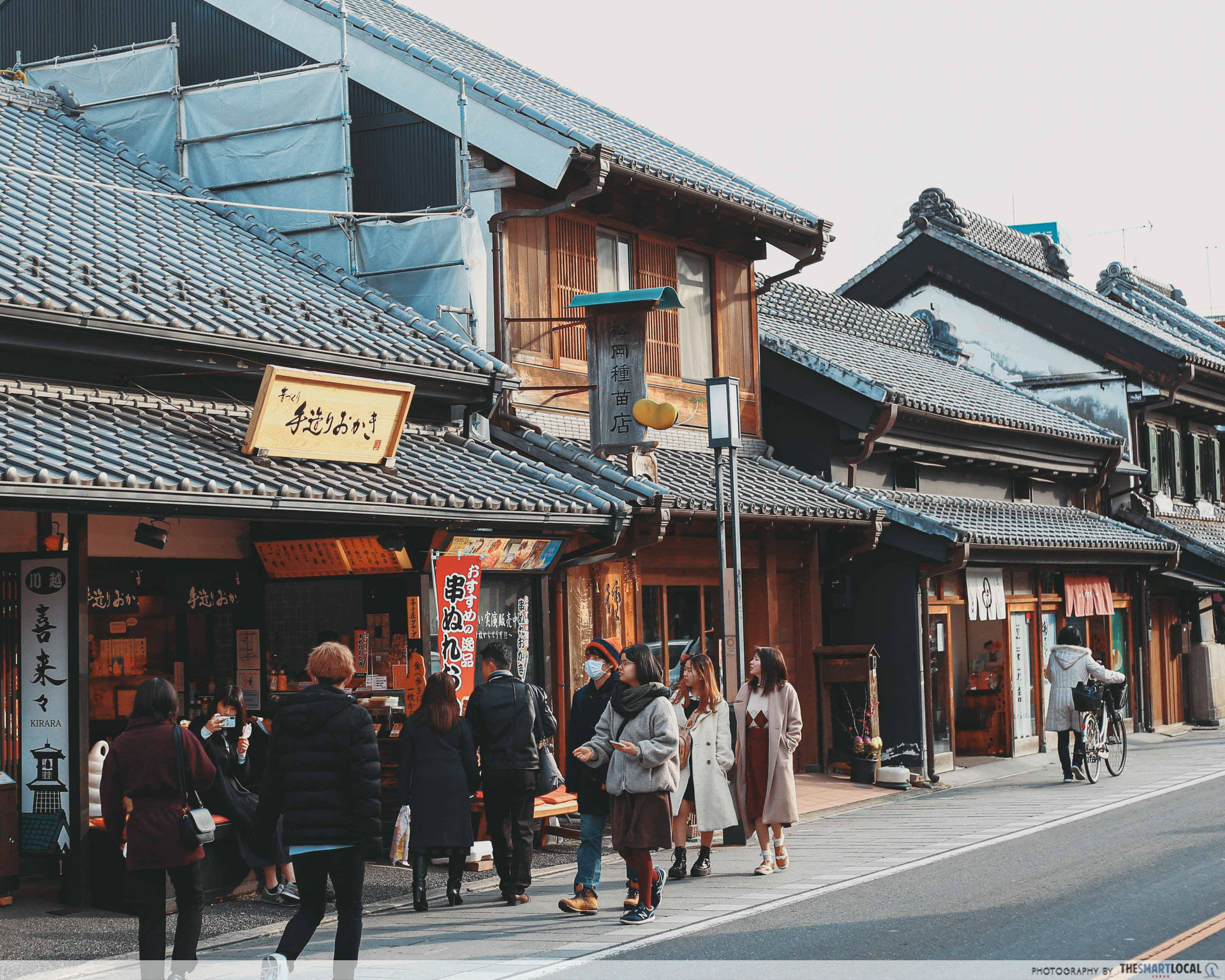
The oldest kurazukuri was built in 1792 and has been designated as a National Important Cultural Property
Address: Saiwaicho, Kawagoe-shi, 350-0063, Saitama
Website
2. Kimono rental at Yuzuya (柚屋)
One of the most popular ways to fully immerse yourself in Kawagoe’s rustic atmosphere is to wear a kimono. Head to Yuzuya (柚屋), a kimono shop that offers simple hassle-free rentals for both ladies and men.
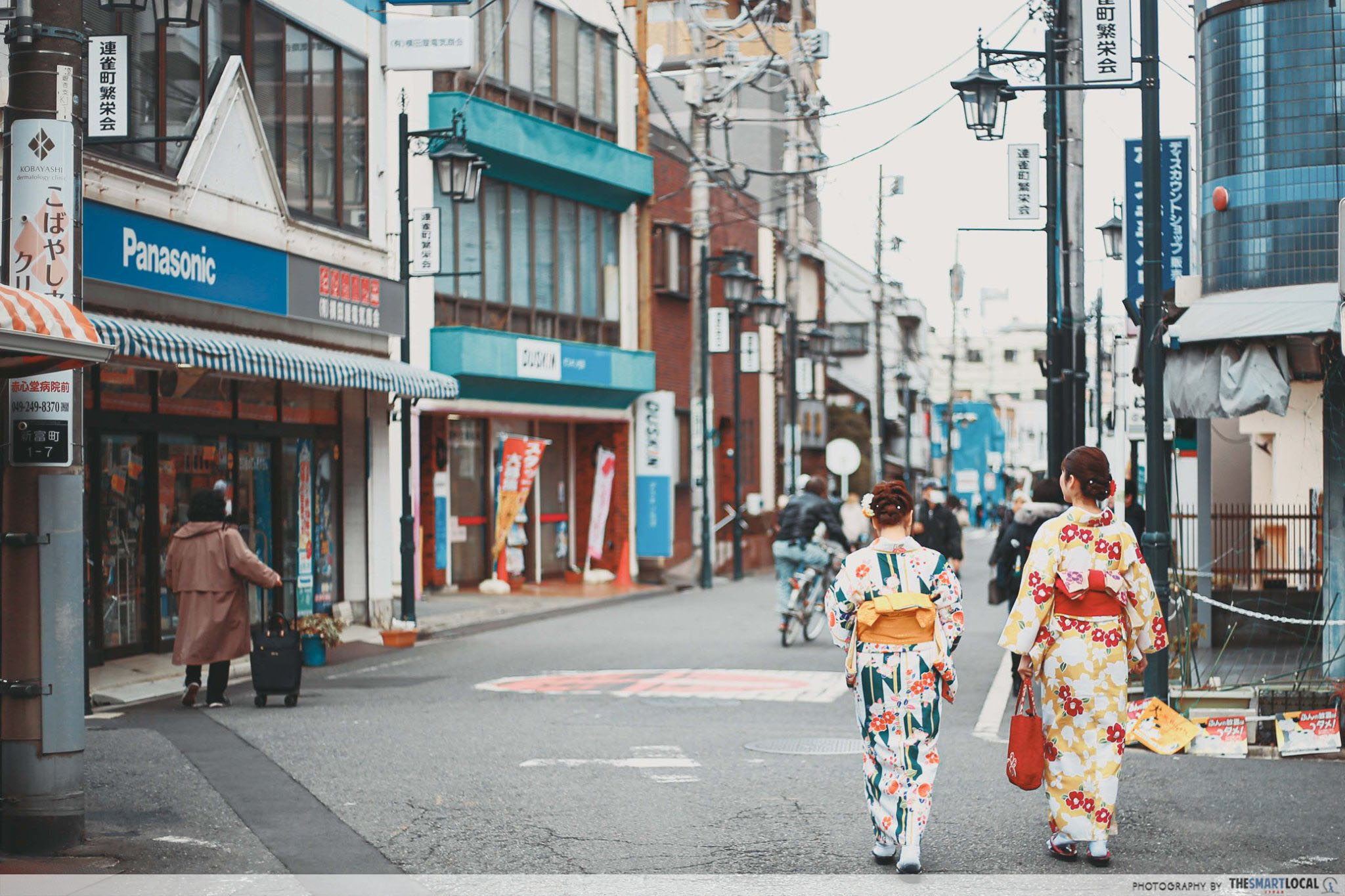
The Ribbon Obi Plan (¥2,800, ~USD26.60) for ladies and Mens Plan (¥4,800, ~USD45.60) includes rental of the kimono and accessories such as socks, sandals and a bag. If you come as a couple or a family, you’ll get a ¥500 (~USD4.75) discount per person. They also offer a Sado Experience (¥500, ~USD4.75) where you can take part in a Japanese tea ceremony and sample traditional Japanese sweets.
Address: 2F, 1-4 Nakacho, Kawagoe, 350-0065, Saitama
Opening hours: Thu – Tue 9.30AM-6PM (Closed on Wednesday)
Telephone: 049-227-9150
Website
3. Listen to the 400-year-old chime of Toki no Kane
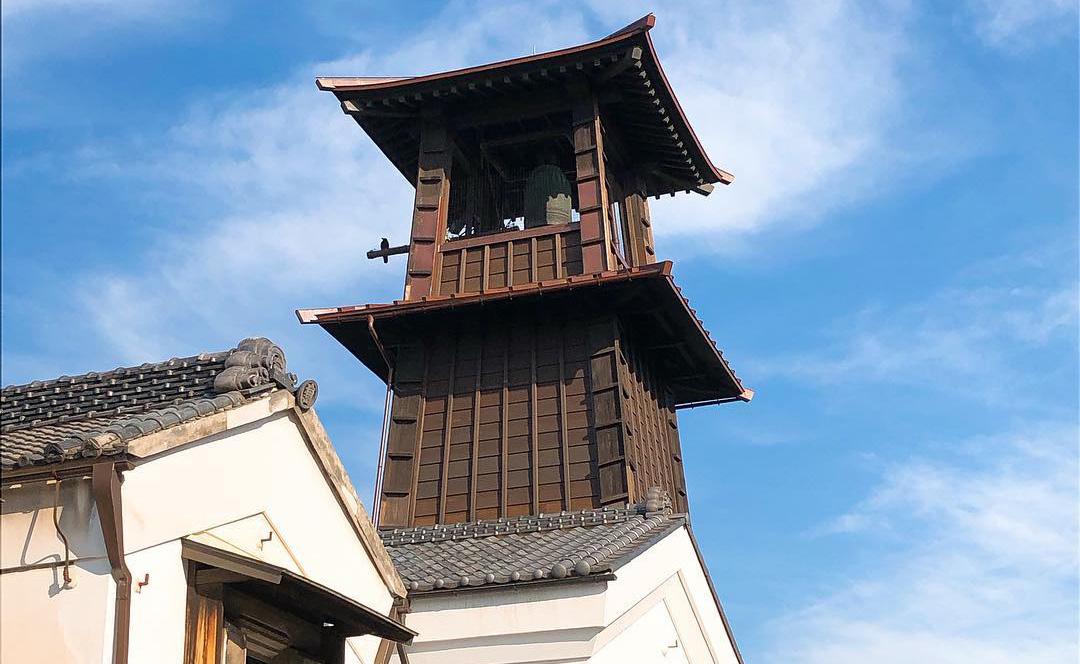
Image adapted from: @ nomuchan7
A constant in Kawagoe has been the Toki no Kane (時の鐘), which has chimed for almost 400 years since its construction in 1630. The wooden structure succumbed to fires multiple times, and it was last rebuilt in 1894.
One of the last few wooden bell towers that remain standing in Japan today, Toki no Kane stands at 16m high, with three wooden levels.
The bell, once rung manually, now rings automatically 4 times a day at 6AM, 12PM, 3PM, and 6PM. Each chime sounds different depending on the time of the day. The sound of the chime was selected as part of the “100 Soundscapes of Japan” project by the Japanese government.
Address: 15-7 Saiwaicho, Kawagoe, 350-0063, Saitama Prefecture
Website
4. Taisho-roman Street (大正浪漫夢通り)
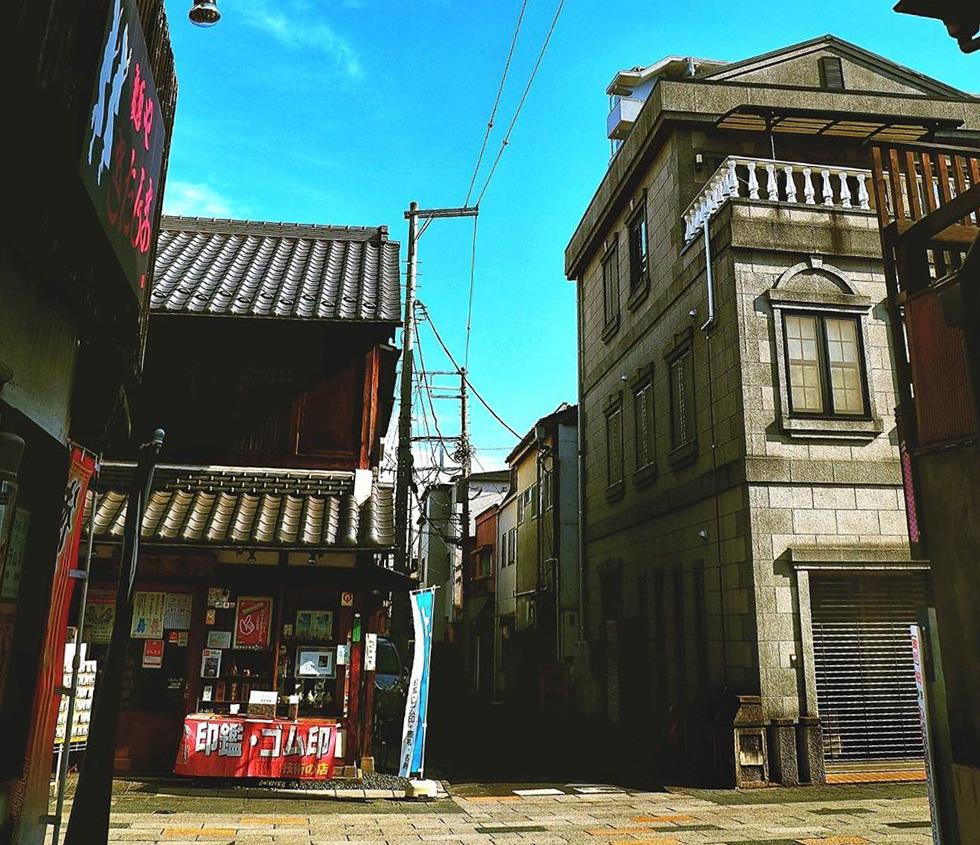
Traditional Japanese-style buildings stand in stark contrast to the Western-style buildings
Image adapted from: @tonemari0918
Taisho-roman Street (大正浪漫夢通り), which translates to “Taisho Romance Street”, evokes images of Taisho-era Japan in the early 1900s. This period saw heavy cultural influences coming in from the West. At Taisho-roman Street, you can see this influence reflected in details such as the street tiles and buildings that have a distinctly European architecture style.
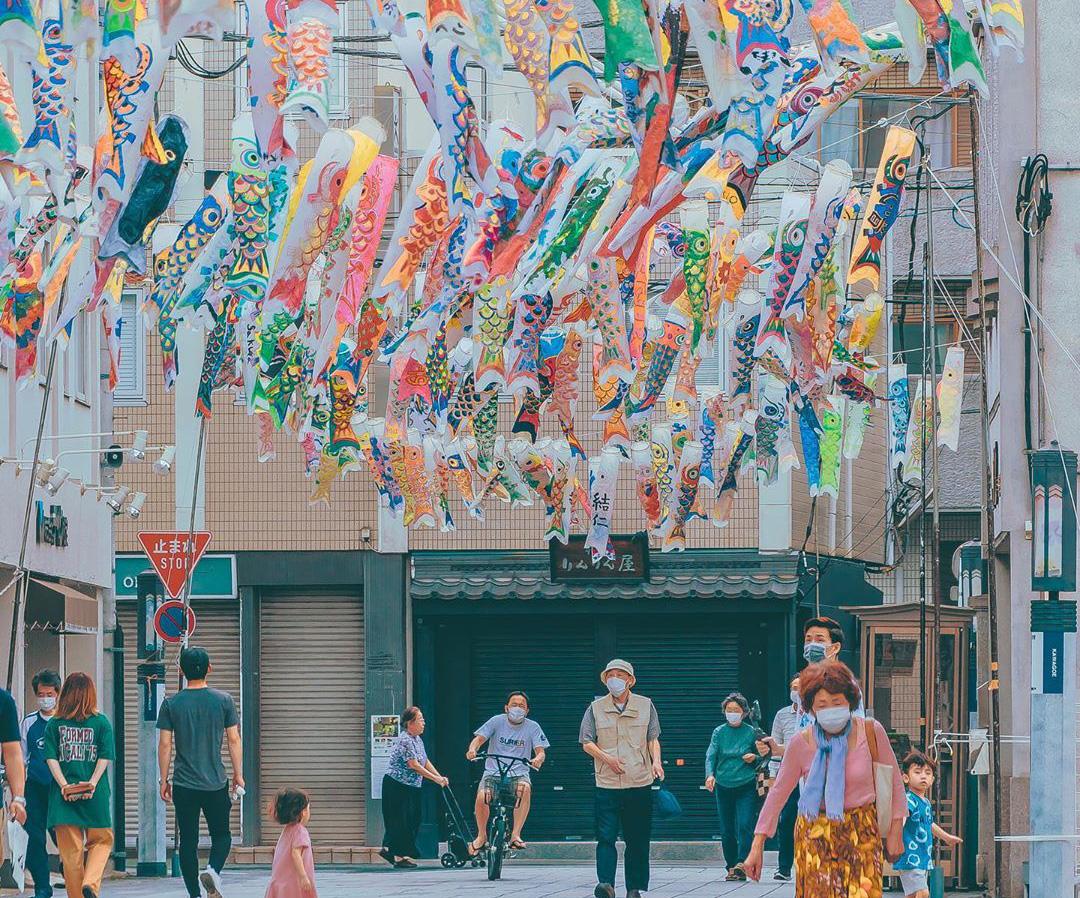
Image adapted from: @oshidax
Visit in early May and you’ll get to witness the sight of hundreds of koinobori (koi flags) decorating the street. These koi flags, which make for a magnificent sight, are meant to celebrate Children’s Day, which falls on 5th May in Japan.
Address: Renjakucho, Kawagoe, 350-0066, Saitama
Website
5. Traditional sweets at Kashiya Yokocho (菓子屋横丁)
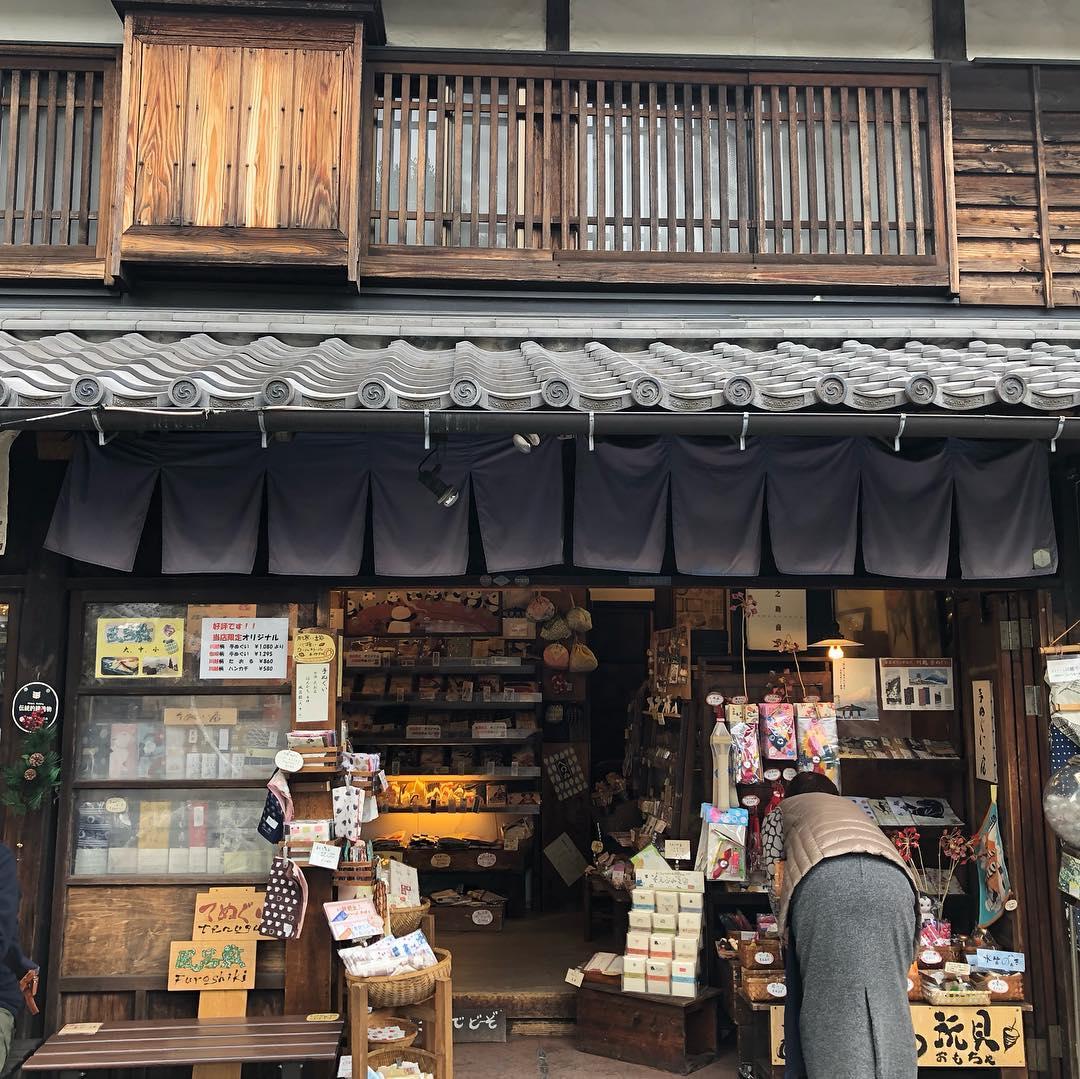
Image credit: @kyoko.tg
Kashiya Yokocho (菓子屋横丁), or Sweets Alley, has been producing candies for the townspeople of Kawagoe since the Meiji-era in the late 1800s. After the Great Kanto Earthquake in 1923, Kashiya Yokocho became the main producer of dagashi – Japanese childhood sweets – for the entire Kanto region.
Today, there are still around 20 sweet shops flanking the alley. Kashiya Yokocho was chosen as part of the “100 Scent Sceneries” project by the Japanese government. You can smell nostalgic wafts of sweetness from the candies as you walk down the street.
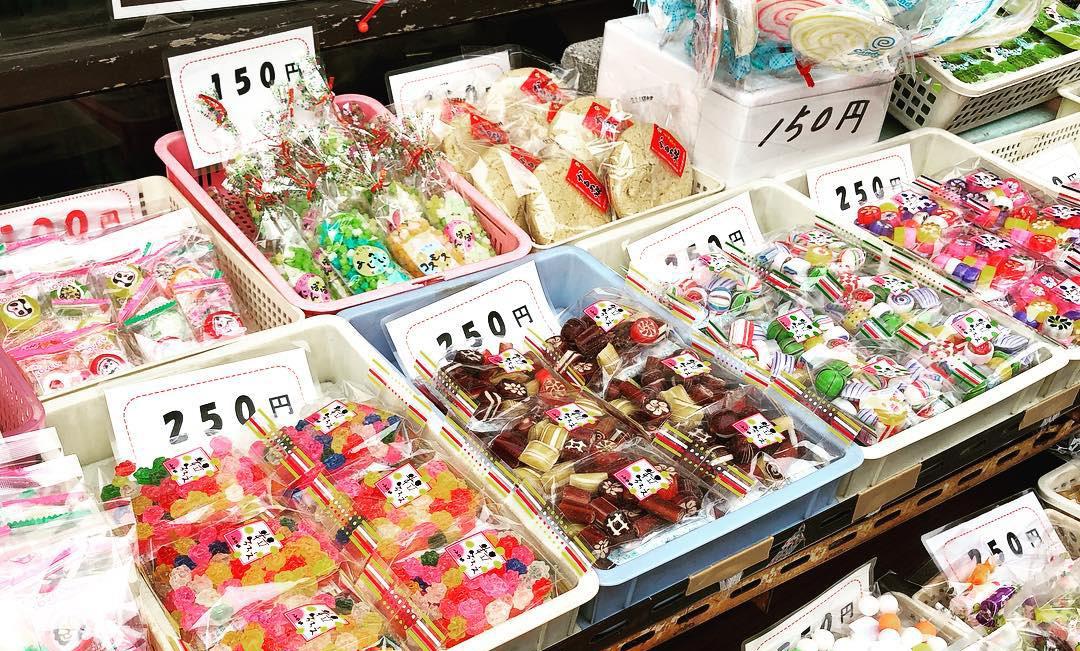
Image adapted from: @kyoko.tg
One of the most popular snacks here is the fugashi (¥400, ~USD3.80), a type of confectionery made with flour and salt, and then covered in brown sugar. The one sold in Kawagoe is known as Japan’s longest fugashi, and while it looks like a baguette, it tastes more like a sugary crunchy toast instead.
Along the street, you’ll find plenty of small candy stores and if you’re lucky, you can get to try candied apples too.
Kashiya Yokocho
Address: 2 Chome Motomachi, Kawagoe, 350-0062, Saitama Prefecture
Opening hours: 10AM-5PM, Daily
6. Matchmaking at Kawagoe Hikawa Shrine (川越氷川神社)
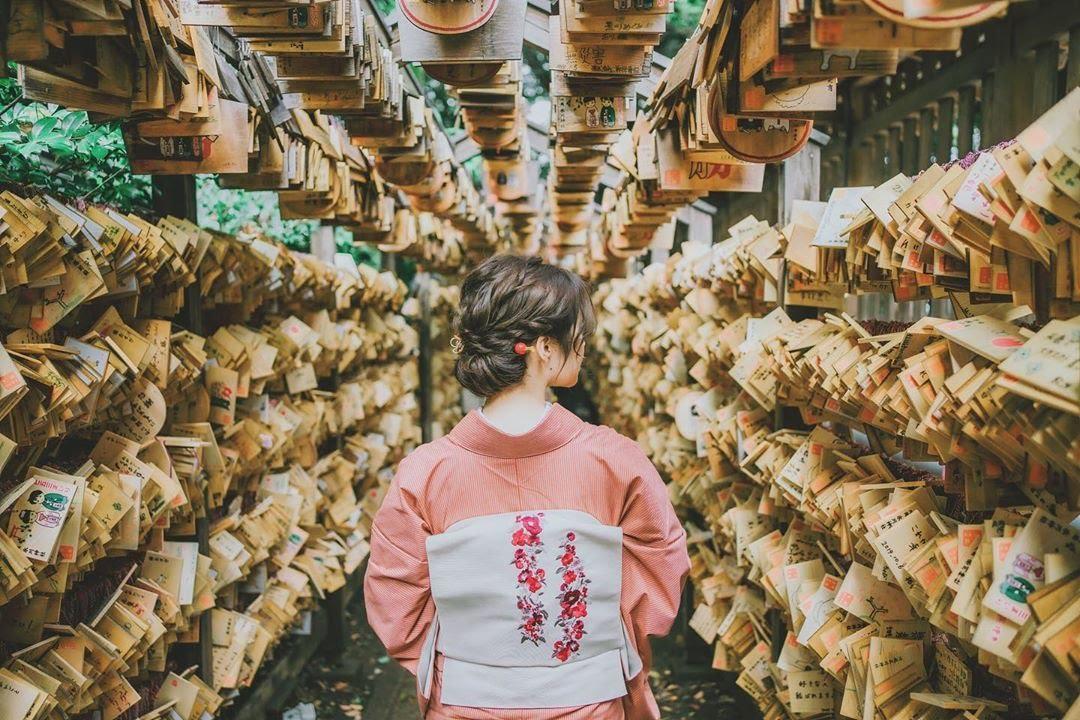
Image credit: @kawagoe_hikawa
The Kawagoe Hikawa Shrine (川越氷川神社) is a 1500-year-old Shinto Shrine that’s renowned for its matchmaking and romance powers. It’s popular with singles looking to get lucky in love and married couples seeking happiness in their marriage.
The shrine houses 5 deities – Susanō no Mikoto, Kushinadahime no Mikoto, Ashinazuchi no Mikoto, Tenazuchi no Mikoto, and Ōnamuchi no Mikoto. There are actually two married couples within these 5 deities, and this has led people to see the shrine as sacred for matchmaking.
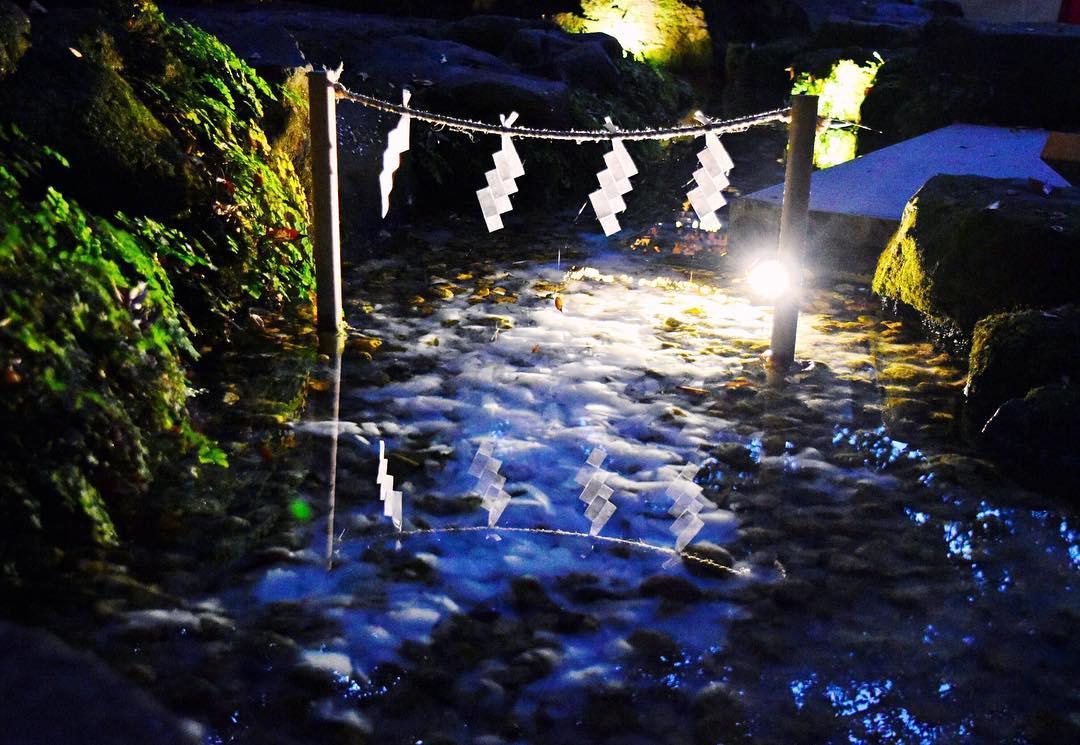
Image credit: @kawagoe_hikawa
Other than the usual prayers, people engage in activities to try and increase their luck in love. This includes cleansing one’s sins by sending off paper dolls using the hitogata nagashi (flow of silhouettes) ritual. The steps are as follows:
- After placing money into the donation box by the side, pick up a hitogata (paper doll).
- Blow onto the hitogata three times.
- Rub the hitogata onto yourself.
- Release the hitogata down the river as you say the phrase “harai tamae, kiyome tamae”, which means “to atone and purify”.
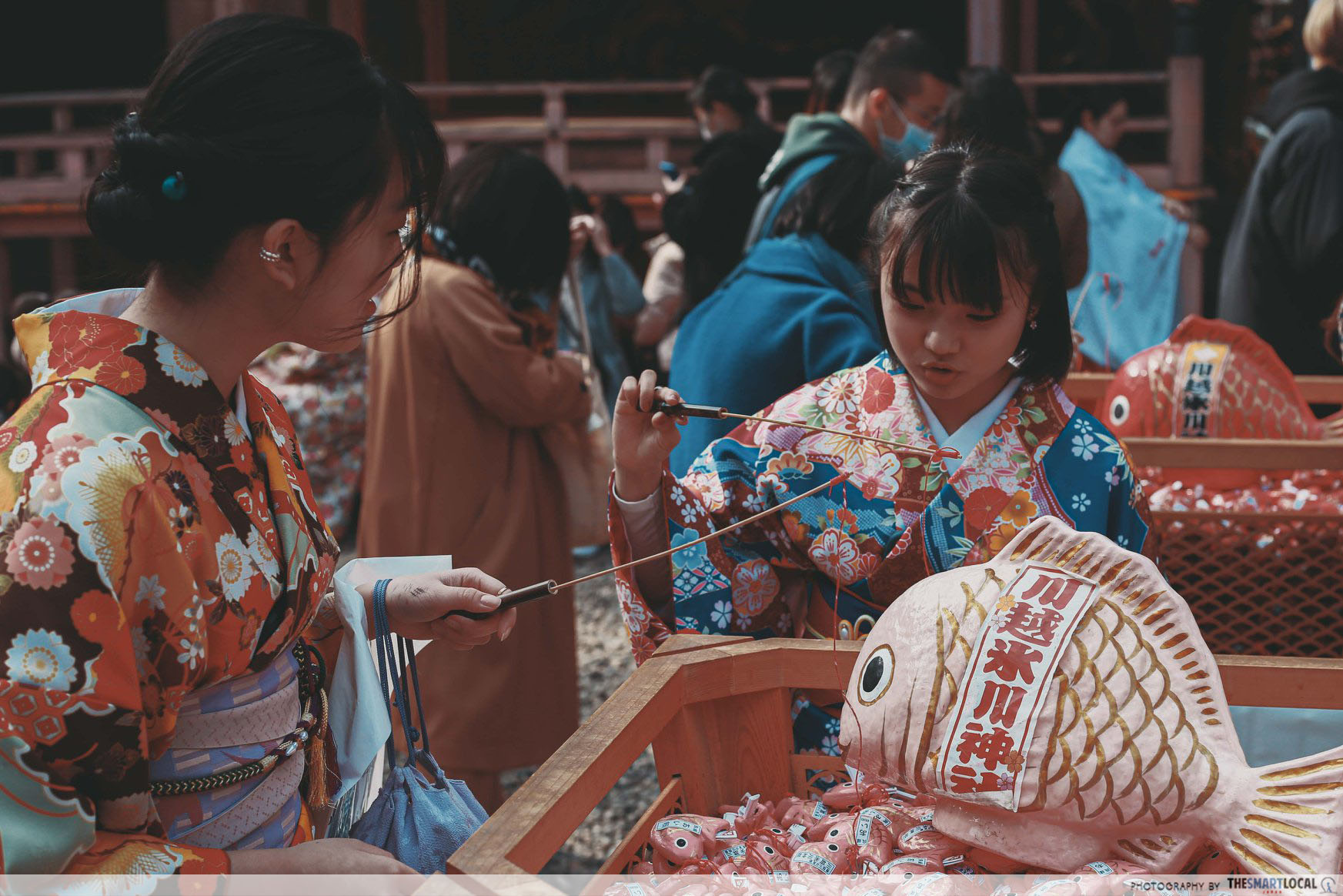
You can also get your fortune told by drawing omikuji, which are strips of paper that tells you your fortune for the year ahead.
At Hikawa Shrine, instead of just getting a piece of paper, you have to take part in the Ai Tai Mikuji (encounter lottery). Here, tai is a homonym for both “fortune” and “sea bream” in Japanese, which explains why you’ll have to fish for your fortune.
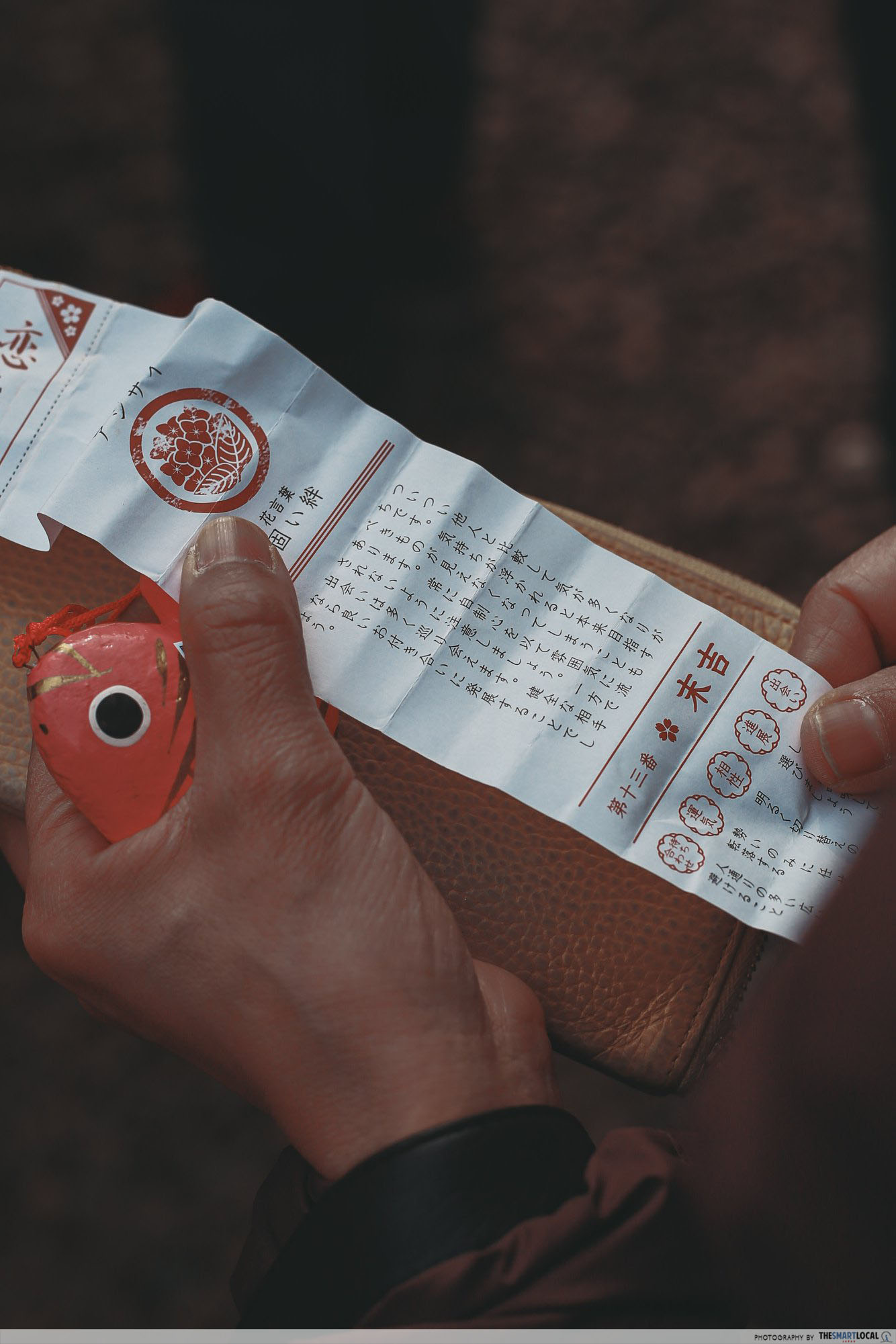
Place ¥300 (~USD2.85) into a donation box, then use a small wooden fishing rod to pick up one of the colourful fortune-telling “sea breams” from a tank. Red “sea breams” are for general fortunes, while white and pink are for fortunes about love.
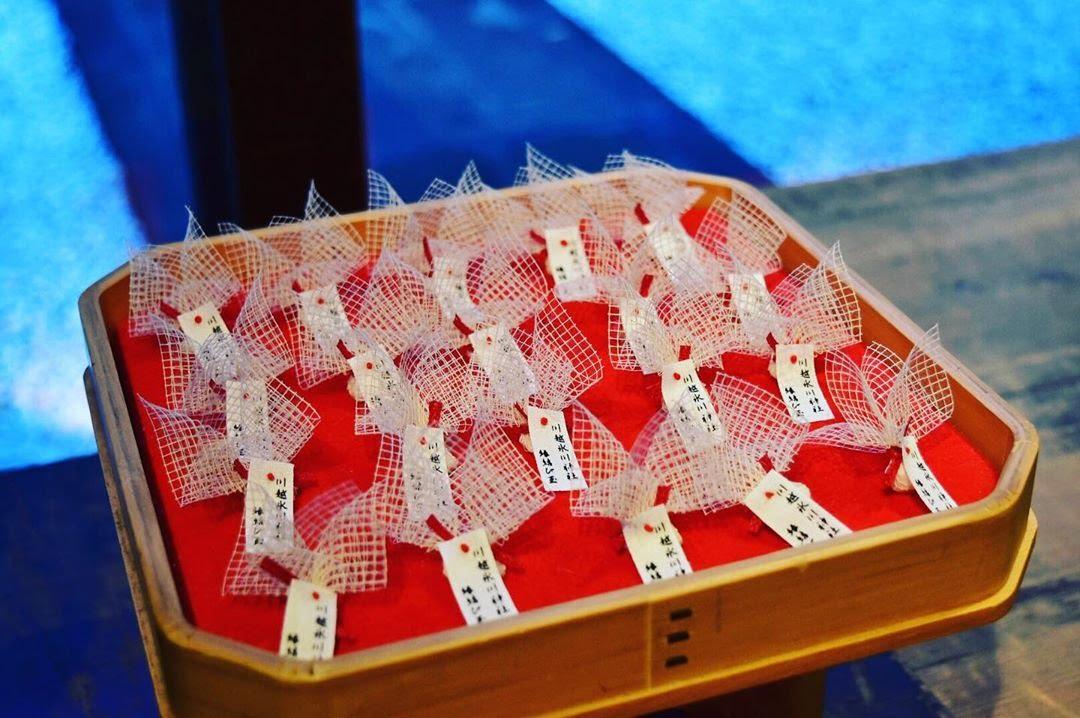
Image credit: @kawagoe_hikawa
There are 2 key love-related items sold at the shrine’s shop. The first is the akai enpitsu (red pencil), which symbolises the red string of fate between you and your lover. As you use it, the pencil gets shorter and shorter, decreasing the gap between the two of you.
The second is a limited edition matchmaking stone – only the first 20 shrine visitors of the day can purchase it. The stone is blessed at the shrine and wrapped in a linen net by a miko (shrine maiden), and it’s said to be an extremely potent love charm.
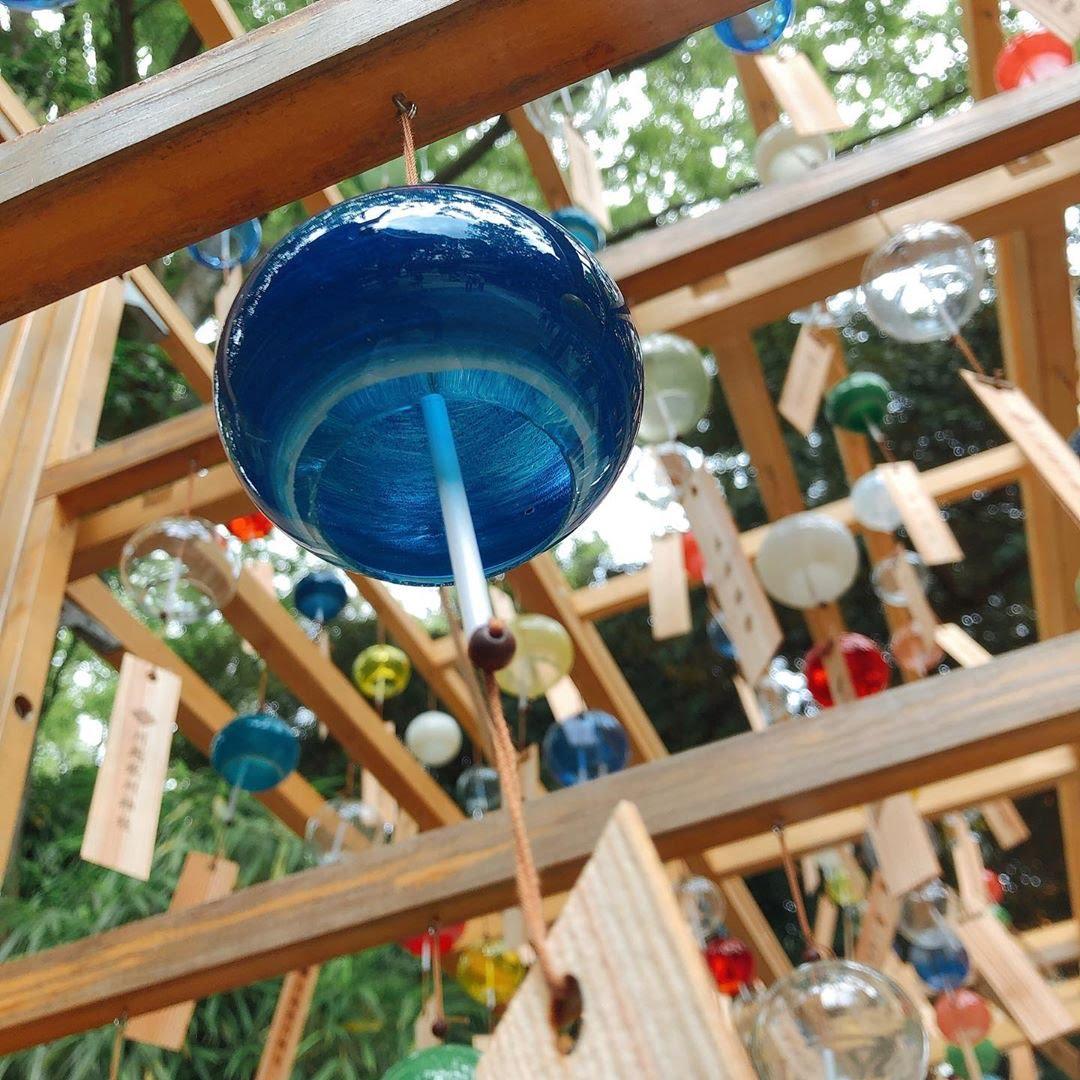
Image credit: @kirakira.0212
Also check out the Tunnel of Ema and the Corridor of Marriage Wind Chimes. The Tunnel of Ema is a corridor surrounded on all sides by ema – wooden prayer plates that contain the wishes of visitors.
The Corridor of Marriage Wind Chimes is only open in the summer, from the beginning of July to the beginning of September. It features a 10m-long corridor with around 2000 multi-coloured wind chimes.
Both of these sights are lit up at night in the summer, so do come back at night for a completely different view.
Address: 2-11-13 Miyashitamachi, Kawagoe, 350-0052, Saitama
Opening hours: 9AM-5PM, Daily (The shrine grounds are open 24 hours)
Telephone: 049-224-0589
Website
7. Kawagoe Festival Museum
The Kawagoe Festival takes place every year on 14th October and it’s a massive event complete with 2 massive 2-storey-high floats and dancers travelling down the streets of Kawagoe.
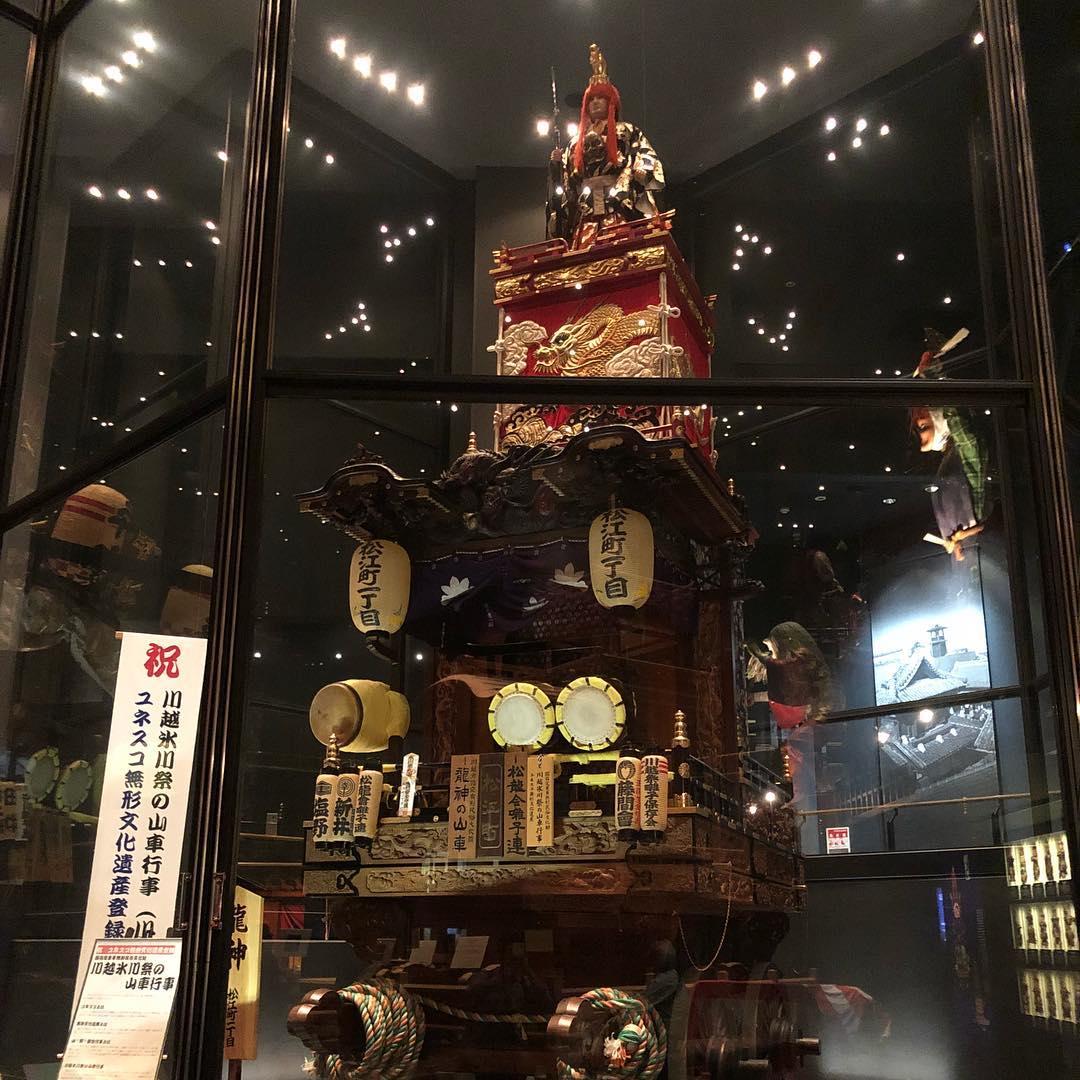
Image credit: @tomoa.1979
If you’re not lucky enough to visit on that day, you can still view the wooden floats at the Kawagoe Festival Museum (川越まつり会館). Entrance to the museum costs ¥300 (~USD2.85).
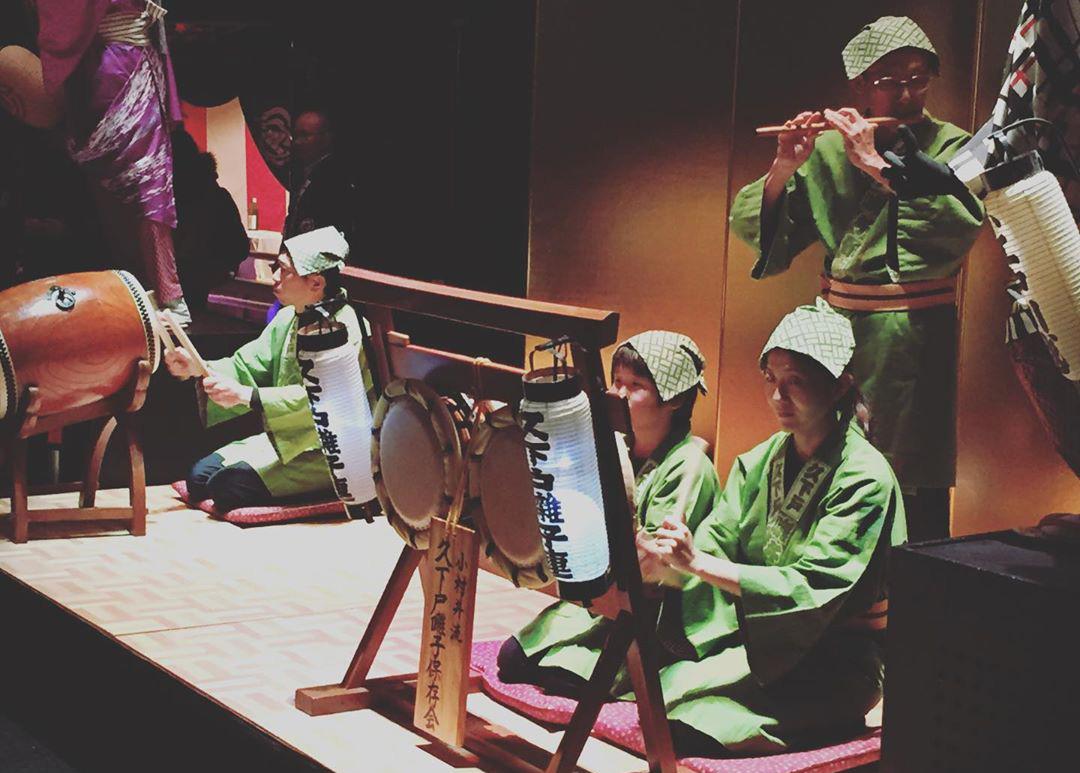
Image adapted from: @kugedo884
If you visit on Sunday, you can also get to watch performers from the neighbourhood play hayashi, a form of traditional Japanese festival music. These performances take place at 1.30PM and 2.30PM every Sunday.
Address: 2-1-10 Motomachi, Kawagoe, 350-0062, Saitama
Opening hours: 9.30AM-6PM, April-September. 9.30PM-5PM, October-March. (Closed every 2nd and 4th Wednesday)
Telephone: 049-225-2727
Website
8. Visit a 280-year-old art supply store
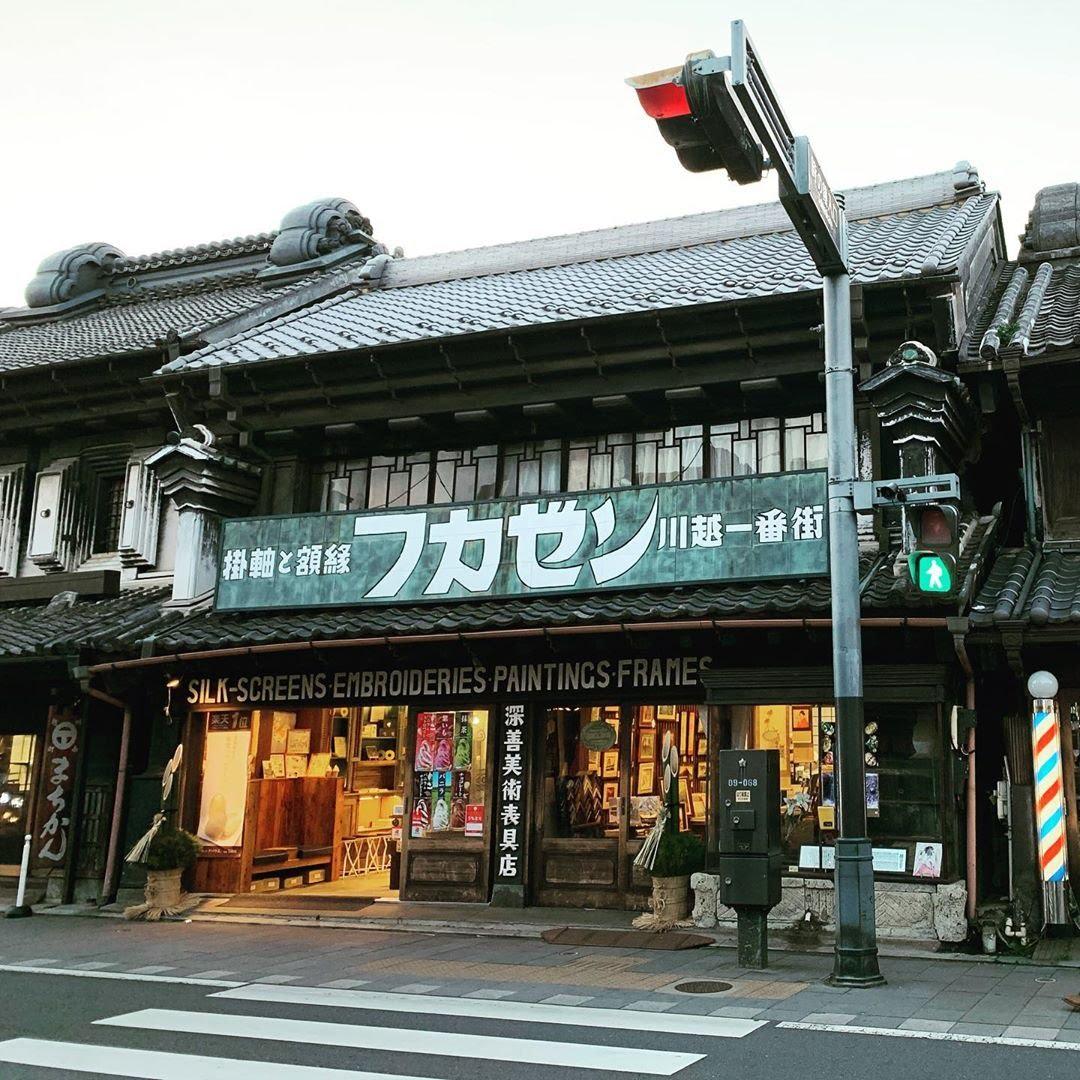
Image credit: @jintaihirai
Founded in 1738, Fukazen (フカゼン) has been selling art supplies in Kawagoe for more than 280 years. In 1894, a great fire consumed Fuzaken’s original building, along with Toki no Kane. The structure was then rebuilt and continues standing strong today.
In the past, the art supply store used to sell writing paper, brushes, shoji paper for windows and doors, fusama (sliding panels), and byobu (folding screens).

Image credit: Fukazen Art
Since people no longer build traditional Japanese houses, Fukazen pivoted their business to sell other forms of traditional Japanese art products. They currently sell hanging art scrolls, picture frames, oil paintings, and shikishi – large square cards that are blank on one side and feature art on the other.
Address: 7-4 Saiwaicho, Kawagoe, 350-0063, Saitama Prefecture
Opening hours: Thu – Tue 9.30AM-6PM (Closed on Wednesdays, and every 2nd & 4th Tuesday)
Telephone: 049-222-1339
Website
9. Shop for sustainable handicrafts at Haruri Ginka (はるり銀花)
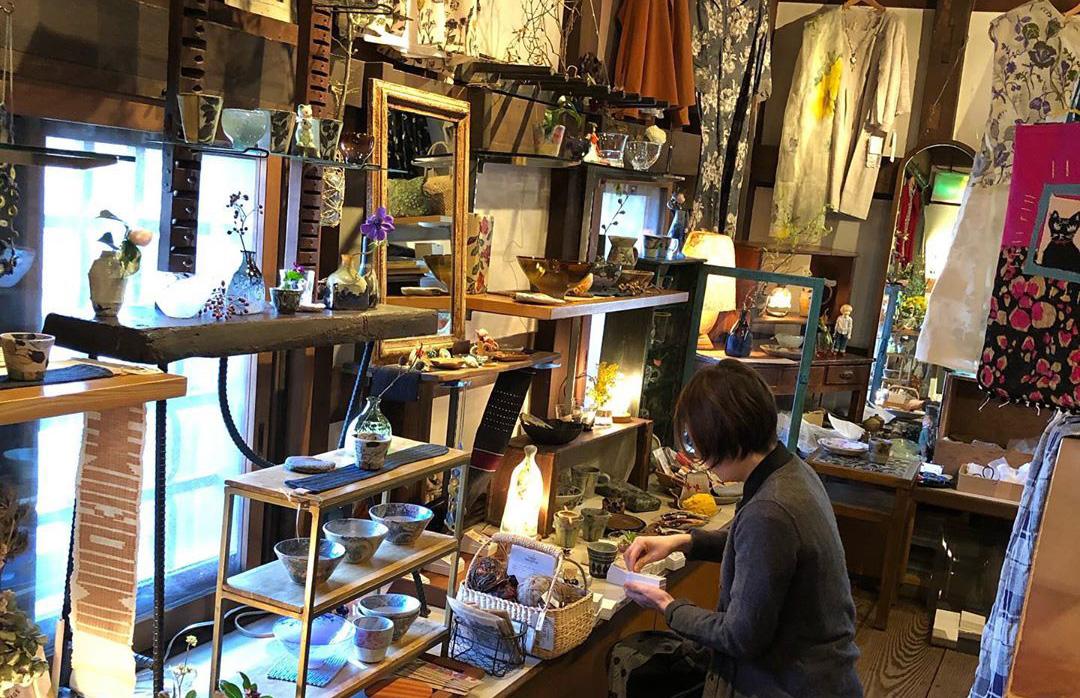
Image adapted from: @haruri.625
Opened in 1992, Haruri Ginka (はるり銀花) is a shop that specialises in selling sustainable handicrafts and products. Hidden within a remodelled house that is over 100 years old, Haruri Ginka carries an eclectic range of products that would be hard to find elsewhere. In 2003, the owners set up a sister shop – Haruri Kinumo (はるり衣裙) – that produces clothing handmade with sustainability in mind.
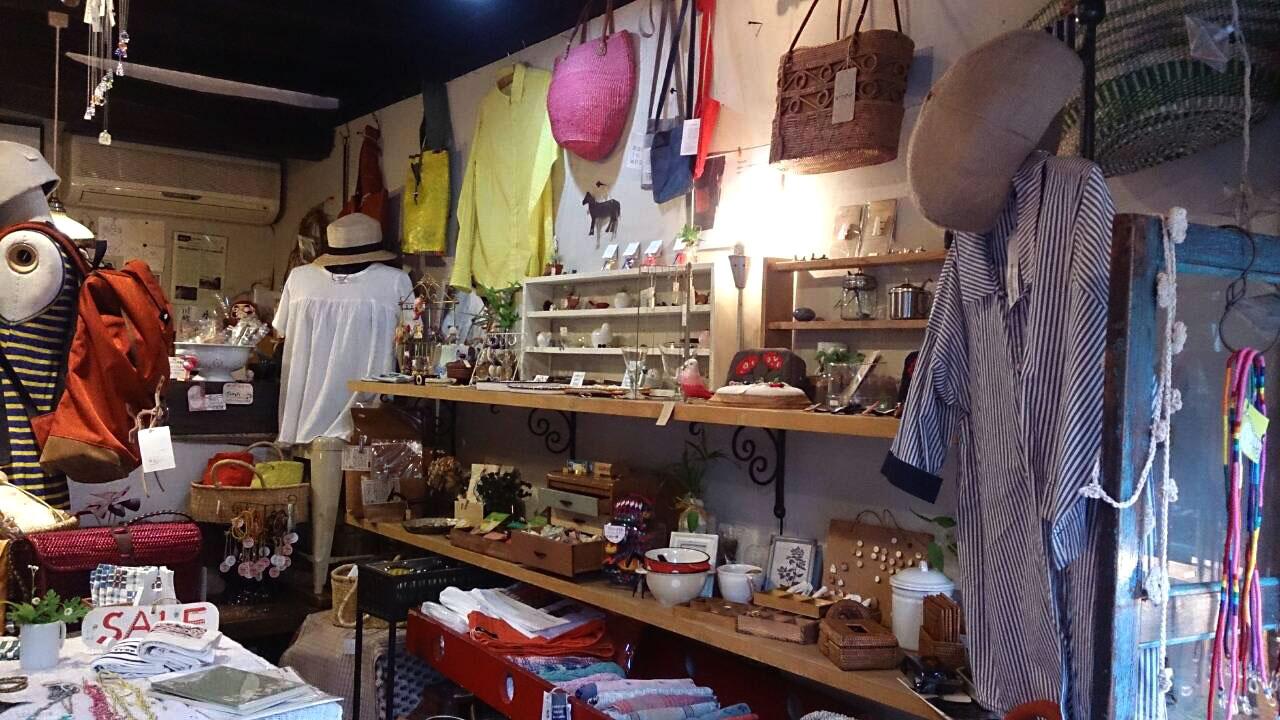
Image credit: Haruri Kinumo
All materials used in these 2 shops are fair trade and sustainable. They sell all sorts of items such as handicrafts, jewellery, accessories, housewares, and even trendy handmade clothing.
Haruri Ginka
Address: 7-4 Saiwaicho, Kawagoe, 350-0063, Saitama
Opening hours: Thu – Tue 9.30AM-6PM (Closed on Wednesdays, and every 2nd & 4th Tuesday)
Telephone: 049-222-1339
Website
Haruri Kinumo
Address: 2-1-25 Motomachi, Kawagoe, 350-0062, Saitama Prefecture
Opening hours: 10.30AM-6PM, Daily
Telephone: 049-224-8689
Website
10. Get your own special blend of shichimi
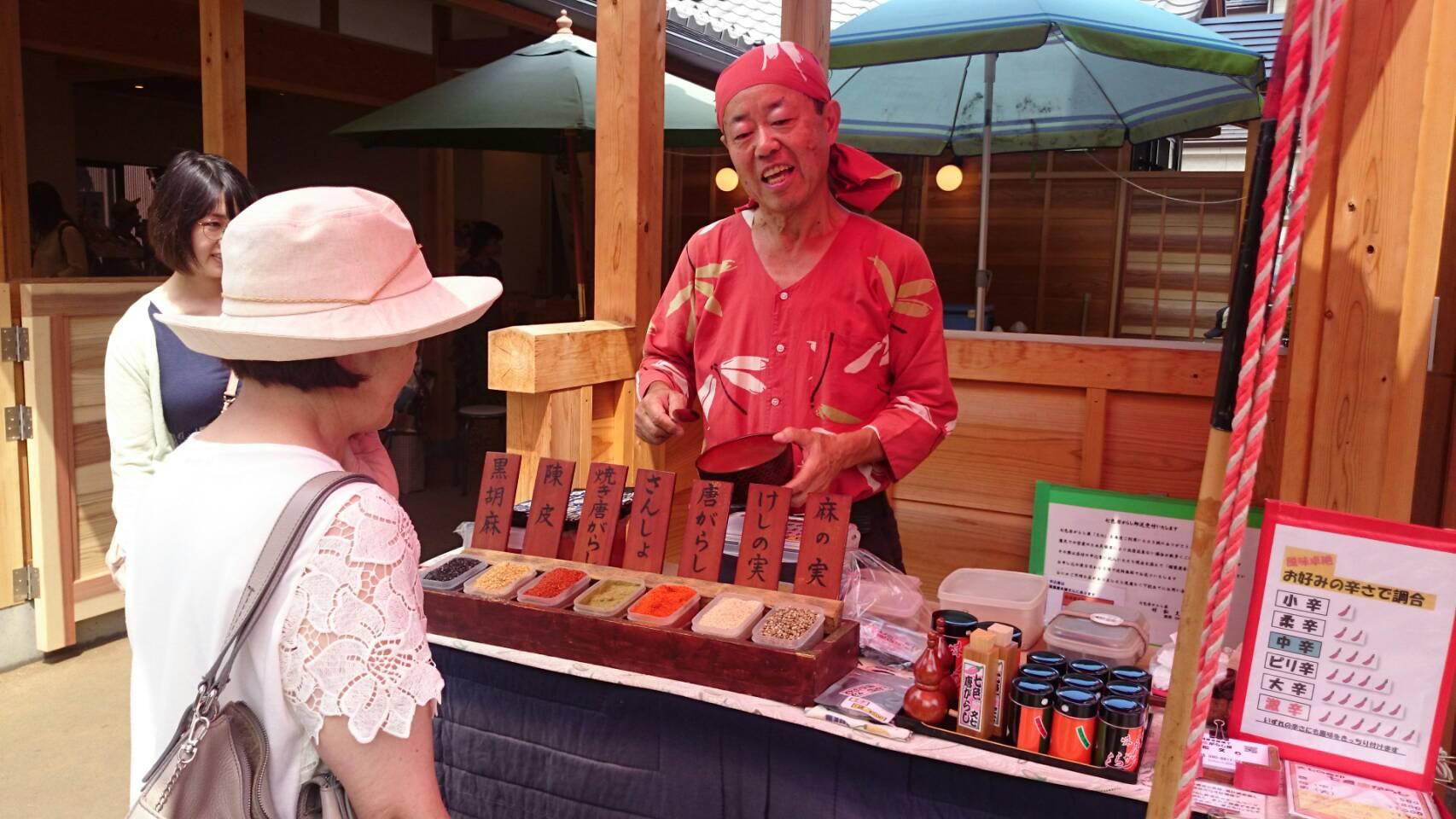
Image credit: Naniro Togarashi Bunshi_
Near the end of Kashiya Yokocho, you’ll find a small pushcart stall selling shichimi (Japanese chilli pepper mix). Nanairo Togarashi Bunshi (七色 唐がらし 文七) is an elusive stall manned by an old man who makes shichimi blends in the old Edo style, right in front of customers. Do note that the store does not have fixed operating hours.
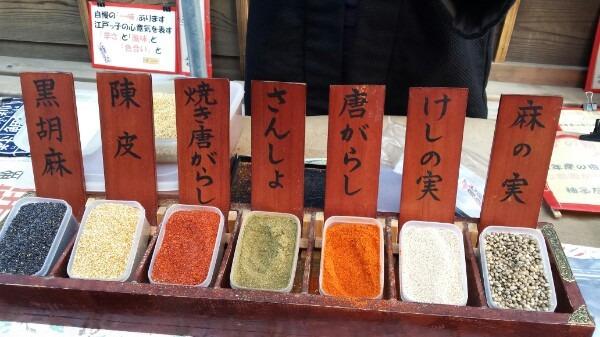
The 7 different ingredients and spices that go into the shichimi blend
Image credit: Petale-Rin
The common term for shichimi blends nowadays is “shichimi togarashi”, which means “seven flavours”. But back in the Edo period, it was actually called “nanairo togarashi”, meaning “seven colours”. In those days, people were more amazed by the colour of the spice mix rather than the taste.
The stall owner prizes both the aroma and the spiciness of the chilli pepper mix. He uses a special blend of mountain pepper to give it a stronger aroma, and grills spicy pepper to form a stronger base for the shichimi.
You can customise the spiciness of your blend, from the least spicy (☆) to intensely spicy (☆☆☆☆☆☆).
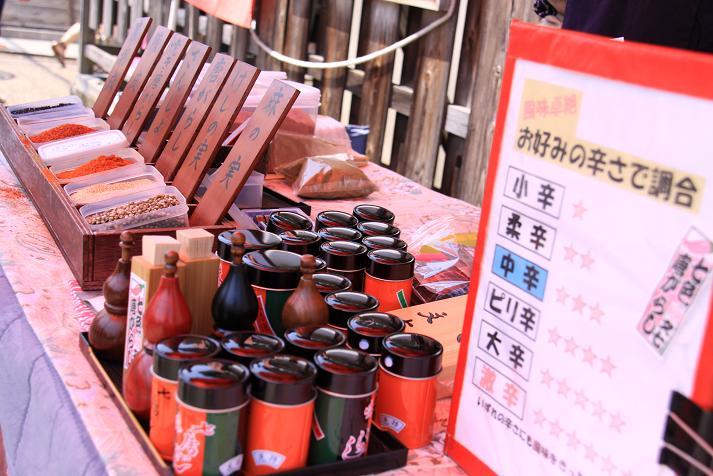
Various bottles and containers for the shichimi mix, as well as the spice level chart.
Image credit: Nanairo Togarashi Bunshi
Your customised blend will be stored in a container of your choice – small packet (¥500, ~USD4.75), medium metal tin (¥800, ~USD7.63), large metal tin (¥1500, ~USD14.31), bamboo container (¥1700, ~USD16.21), or a gourd bottle (¥2000, ~USD19.08).
After you’ve placed your order, the owner will prepare the spice mix while explaining the different components of the blend, as if he’s telling a story.
- “First we add in the local specialty of Bushu and Kawagoe, black sesame.”
- “Then Arita’s mandarin orange peel from Bushu, Shikoku.”
- “The Naito grilled spicy pepper made in Edo.”
- “The spiciest peppers are from Shizuoka, Tokaido, and Asakura, Kyushu.”
- “The medium spicy peppers are a specialty of Takamatsu, Shikoku.”
- “Poppy seeds imported from overseas.”
- “Lastly, hemp seeds from Yashu and Nikko”
- “Now the nanairo togarashi is complete.”
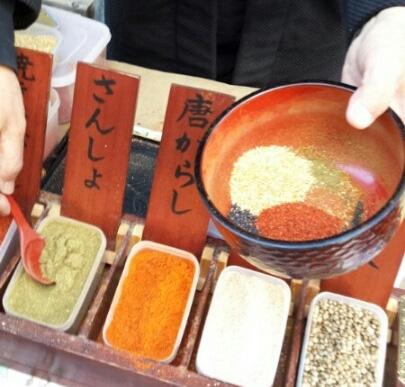
Explaining each ingredient one by one as he adds it in.
Image credit: Petale-Rin
This used to be done so that customers could imagine how these ingredients from all over Japan came together in a single spice mix. To them, the nanairo togarashi was a mystical spice mix made from ingredients that were out of this world. This traditional nanairo togarashi assembly was once considered one of the “100 Famous Views of Edo”.
Address: 2 Chome Motomachi, Kawagoe, 350-0062, Saitama
E-mail: [email protected]
Website
11. Sip on local beers in a tap room
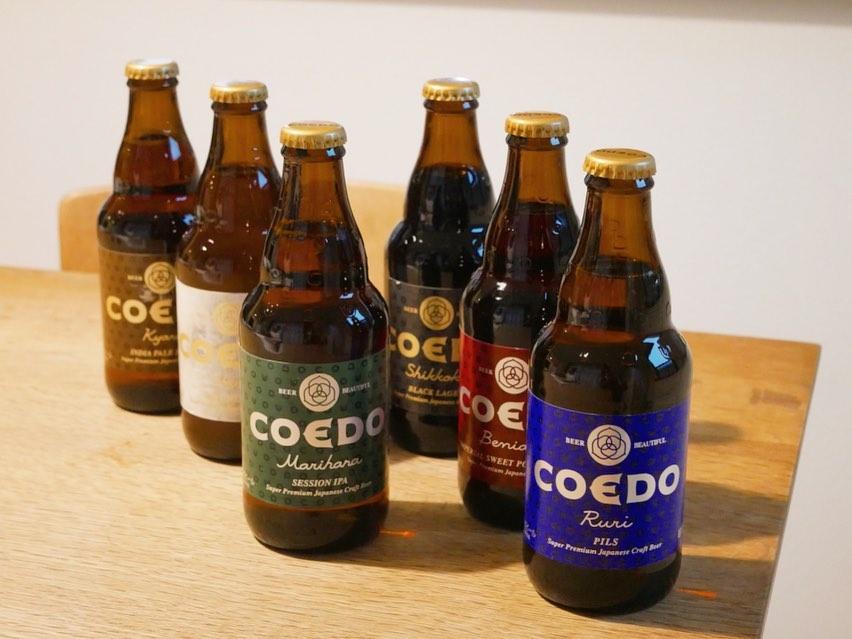
Image credit: @fuku_chang
Coedo Beer is a popular brand of craft beer produced in Kawagoe. It is now sold all over Japan and has won overseas awards such as the European Beer Star Award and Monde Selection Grand.
The local beer was first produced back in 1996 and it’s made with sweet potatoes using German techniques. Popular flavours include Shiro (creme brulee with banana and caramel), Kyara (fruit and sweet malt), and Shikkoku (smoke-y earthiness, cocoa, and a subtle sweetness). These beers are available in establishments throughout Kawagoe.
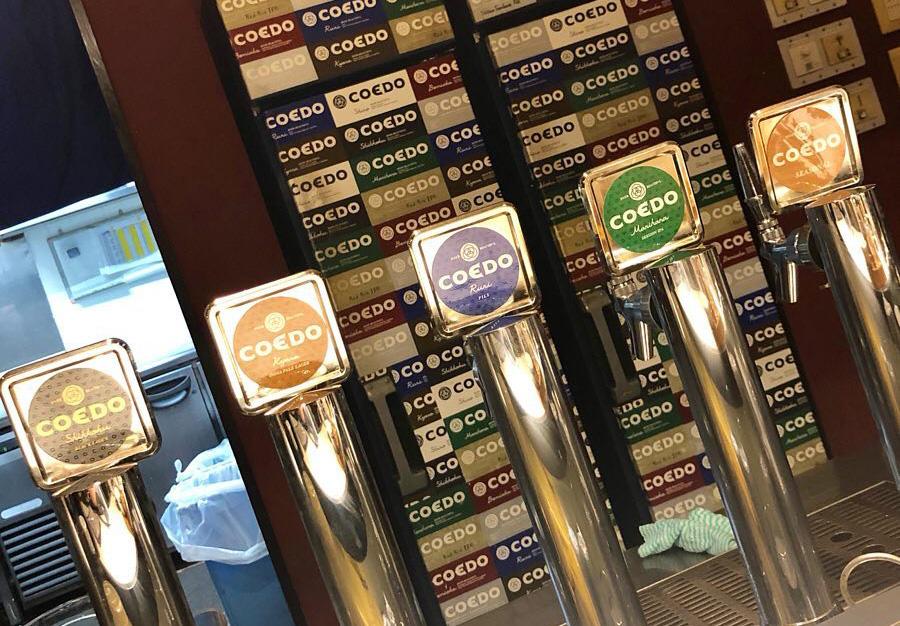
Image adapted from: @yeah_right_0419
The Coedo Craft Beer 1000 Labo is a taproom collaboration with a Chinese yum cha restaurant. Diners get to sip on a variety of local craft beers while eating some dim sum. Visitors can also experience a variety of seminars and workshops, held periodically, to get an inside look at the craft beer industry.
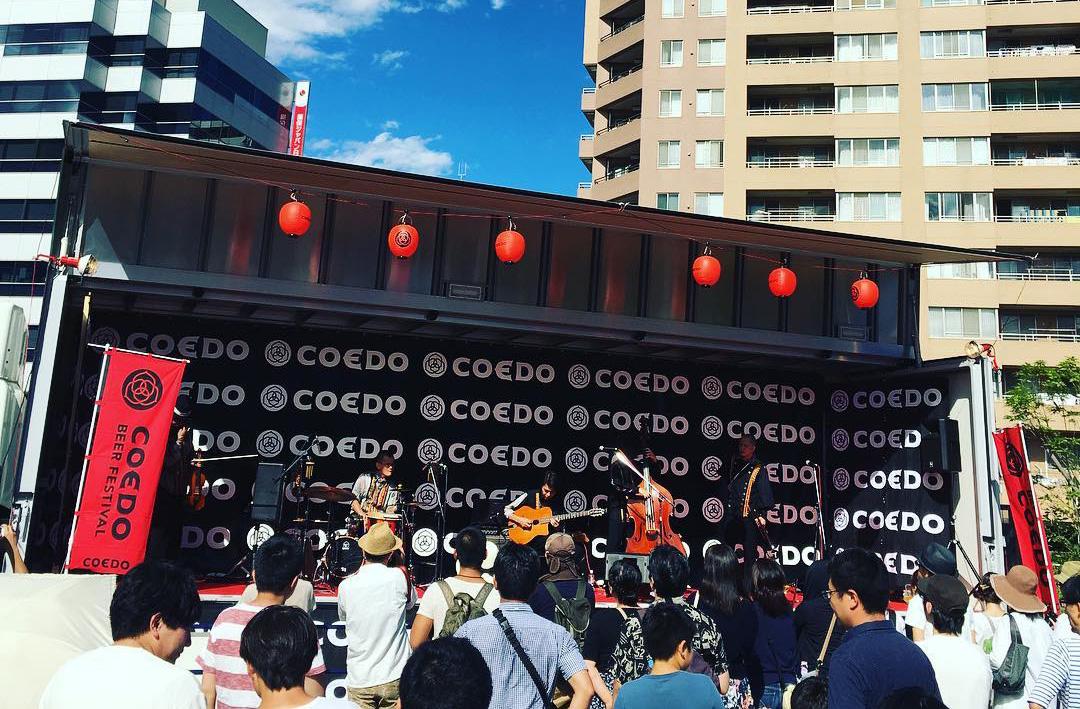
Image adapted from: @yocdab
Each year, usually in September, Kawagoe will play host to the Coedo Beer Festival. It is held as a celebration of Coedo Beer’s success and offers food, music, artwork, and dance.
Coedo Craft Beer 1000 Labo
Address: 59-1 Fukuda, Kawagoe, 350-0821, Saitama
Opening hours: 11AM-9PM, Wednesday-Sunday
Telephone: 049-228-0800
Website
12. Join a samurai patrol
As the sun sets in Kawagoe, many of the shops will close for the day and the tourist crowd will start to dissipate. But there’s no need to worry about the darkness bringing with it danger and crime as the Kawagoe Magistrate’s Office Patrol Group ensures that everyone is safe.
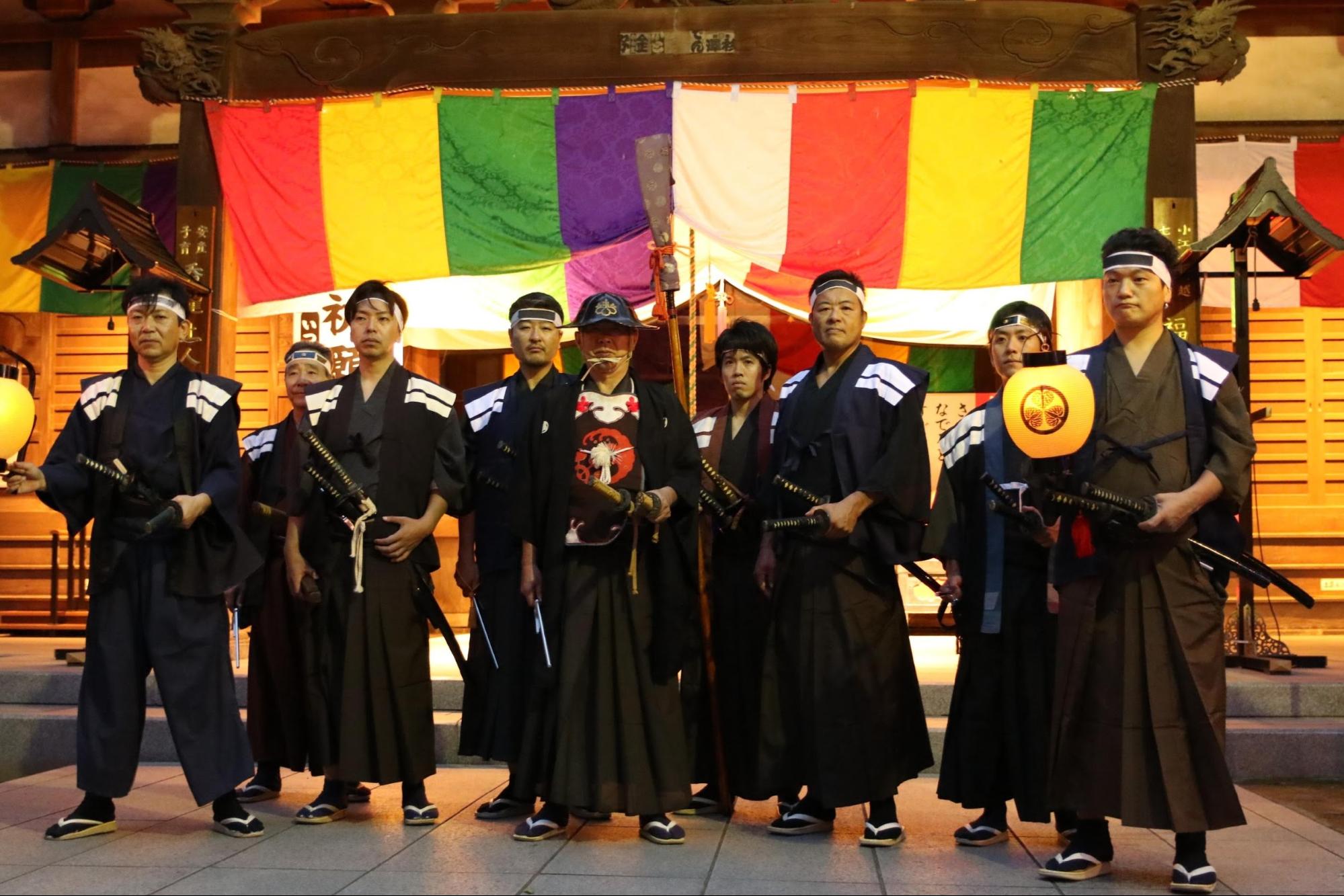
Image credit: Saitama Prefectural Government
On the 2nd and 4th Saturday of each month, you’ll get the opportunity to join this patrol group. No reservations are required – just turn up in front of the Koedo Kawagoe Shop at 5pm and pay ¥1500 (~USD14.31).
As part of the patrol, you’ll be fully decked out in traditional Edo-era garb, just like what government officials used to wear. You’ll also be equipped with samurai swords – not real ones, of course – wooden poles, and lanterns.
Koedo Kawagoe Shop
Address: 9-2 Saiwaicho, Kawagoe, 350-0063, Saitama
Meeting time: 5PM, 2nd & 4th Saturday of each month
Website
13. Visit the most picturesque Starbucks in Japan
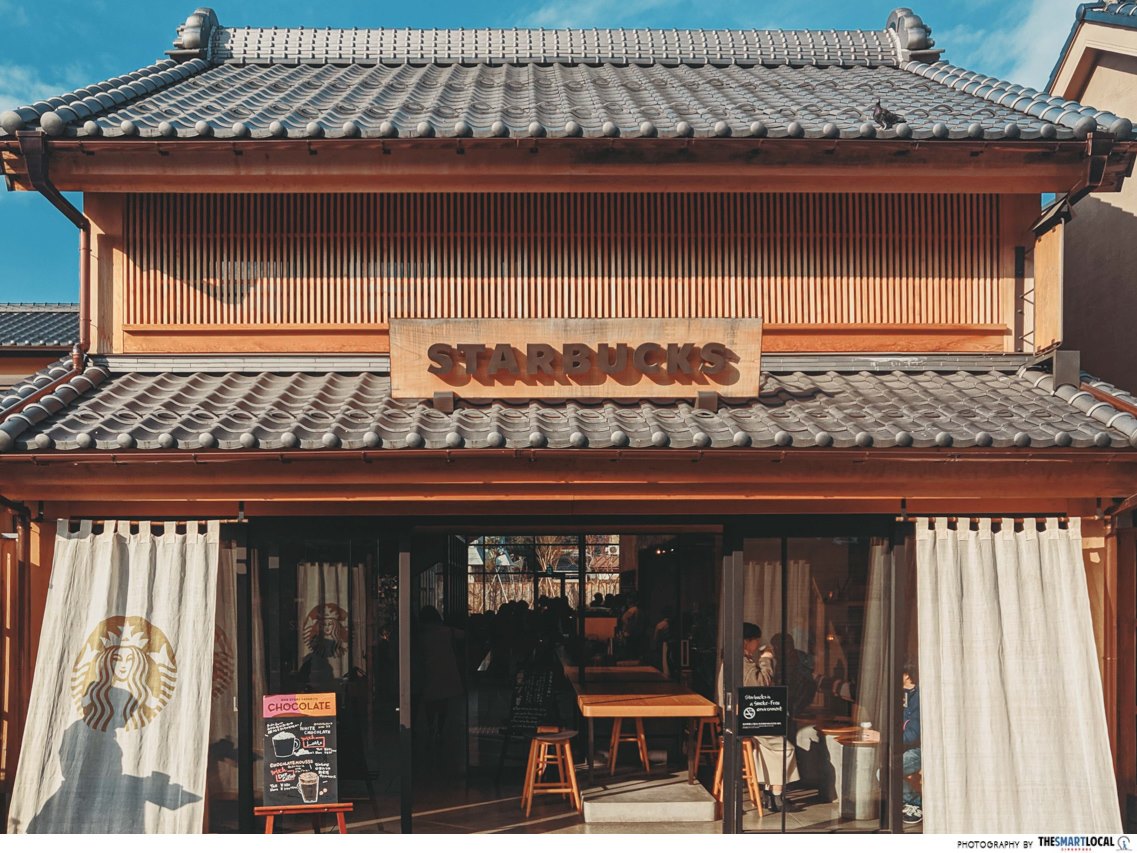
Ever since its opening in 2018, Starbucks Kawagoe Kanetsuki Dori (スターバックス川越鐘つき通り店) has been featured in multiple lists for its “traditional-meets-modern” look. The shop’s exterior features cedar wood grown locally in Saitama Prefecture, which helps it blend in with the town’s old-world aesthetic.
The fabric used for the bench cushions in this Starbucks outlet is a famous regional product called “kawagoe tōzan”. Even the cords that tie the bench cushions in place make use of a traditional Japanese knot called the “ume musubi”, which symbolises a tight bond not easily broken.
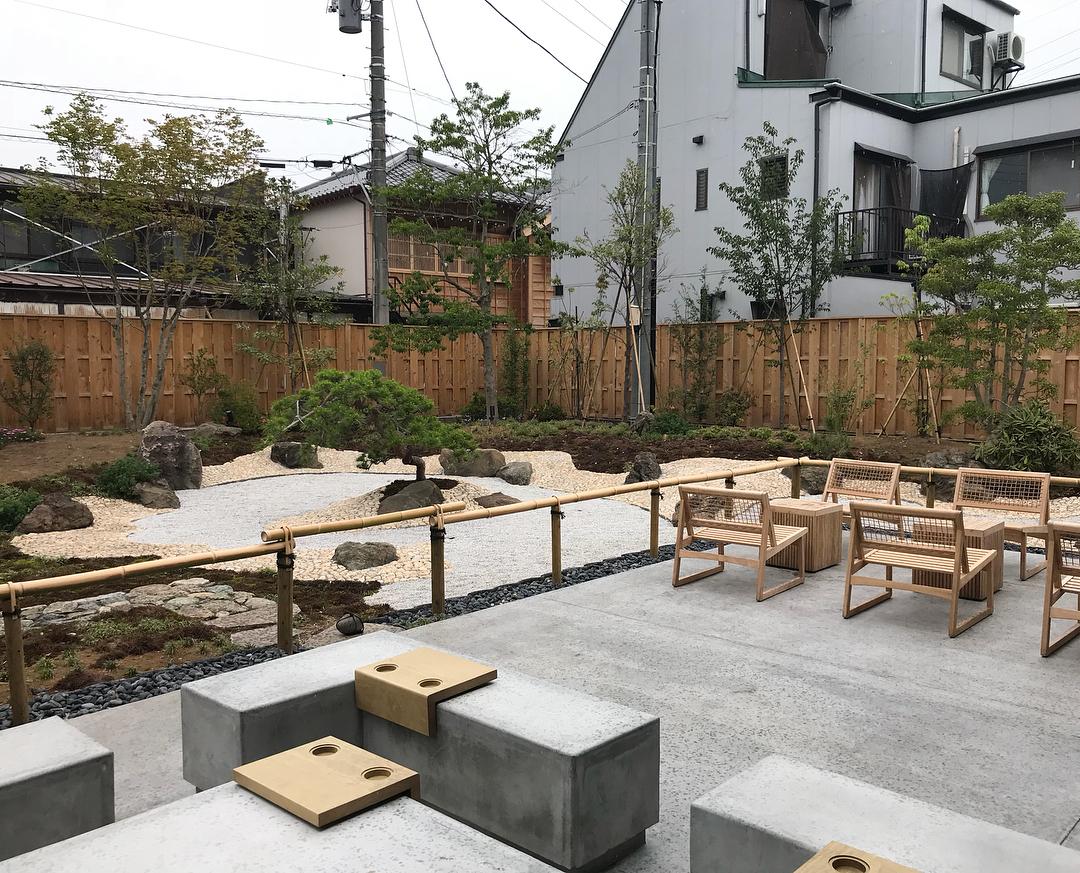
Image credit: @kim0joo2
There’s a Japanese zen garden at the back of the shop, complete with a terrace where you can sip your drink in serenity. This added touch makes this particular Starbucks outlet stand out even from other traditional Japanese-inspired outlets.
It is located near the Toki no Kane, so if you sit on the outdoor terrace at the right time, you get to enjoy your coffee while listening to the calming chimes from the tower.
Address: 15-18 Saiwaicho, Kawagoe, 350-0063, Saitama
Opening hours: 8AM-8PM, Daily
Telephone: 049-228-5600
Website
14. Try 47 different flavours of beans
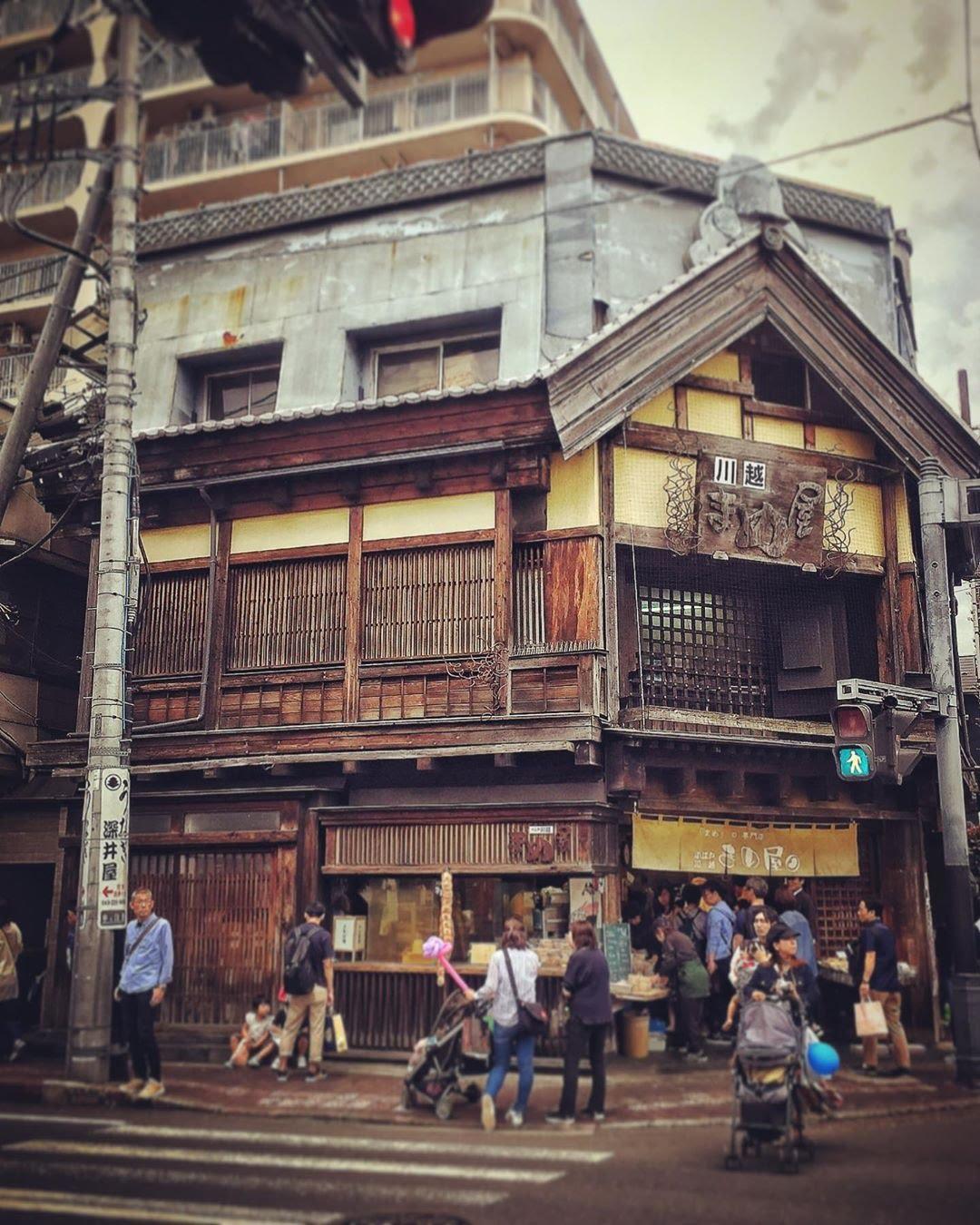
Image credit: @suzan.1002
Taste-testing food samples at Koedo Mameya (小江戸まめ屋) feels like going on a gastronomy pilgrimage as the shop sells bean snacks in 47 different flavours.
Housed within a beautiful rustic warehouse on the corner of a street, the shop offers samples for all of their products. The snacks sold at Koedo Mameya are made with a variety of different beans coated in different flavours, ranging from sweet to savoury.
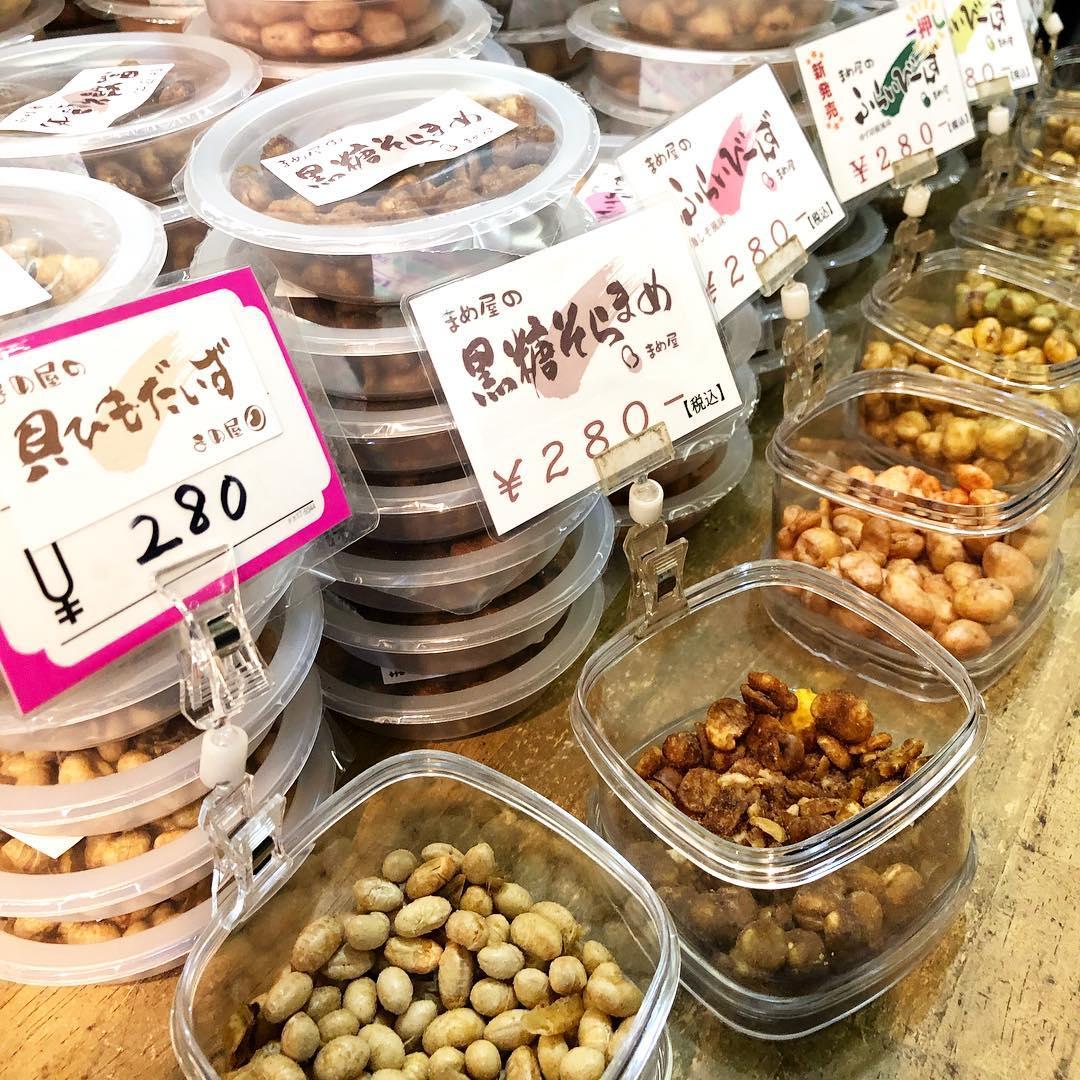
Image credit: @kyoko.tg
Prices depend on the flavour and type of bean. Popular sweet flavours include kinako (roasted soy bean flour), red bean, matcha, milk, and black sesame. There are also savoury flavours such as curry, miso, seaweed, and wasabi. Sample your way through all of them until you find one that takes your fancy.
Address: 5-13 Nakacho, Kawagoe, 350-0065, Saitama
Opening hours: 9AM-5PM, Daily
Telephone: 049-227-8680
Website
Guide to Kawagoe in Saitama Prefecture
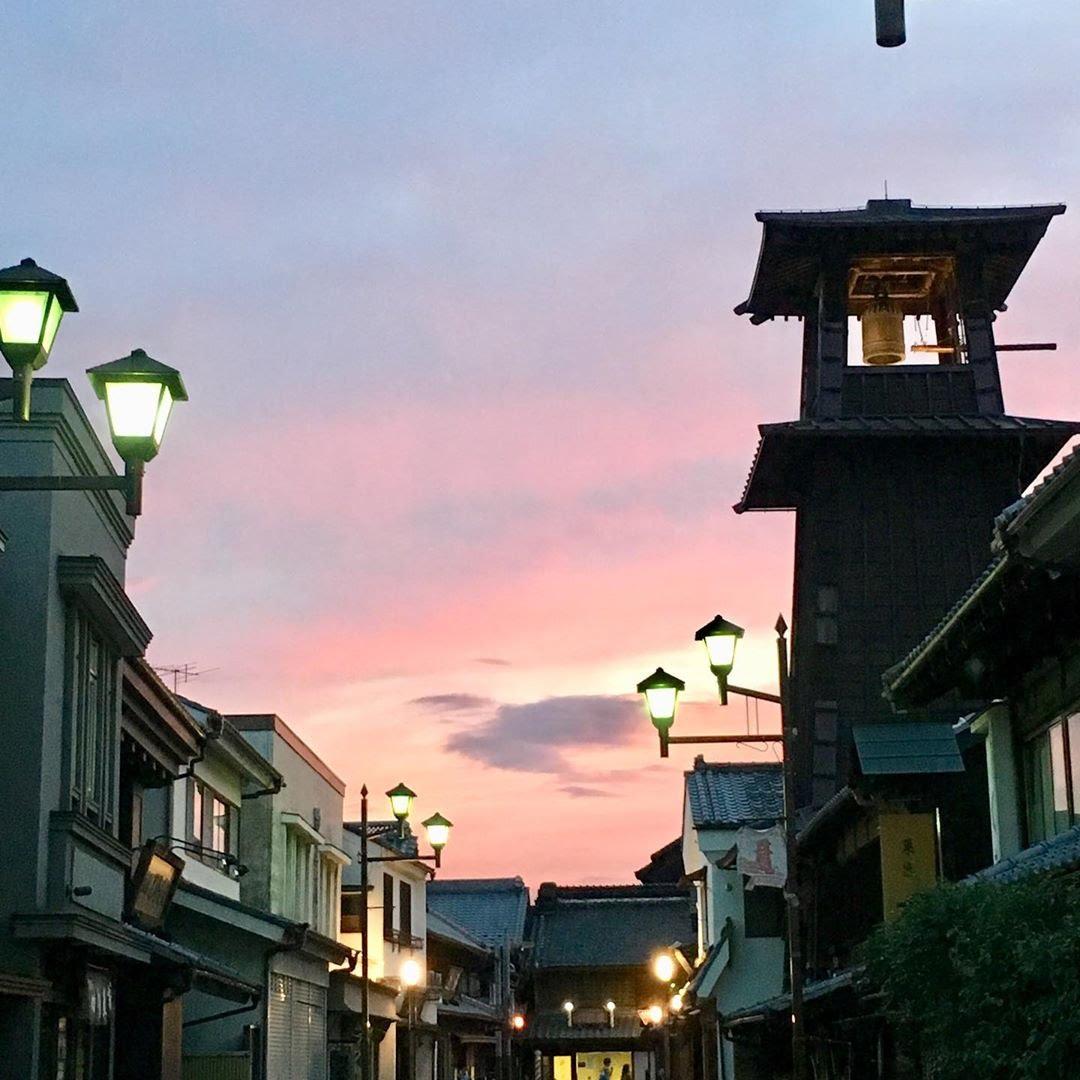
Image credit: @amaguri.kawagoe
If you feel stifled by the modern metropolis that is Tokyo, take a quick trip to Kawagoe to get a taste of Edo-era Japan. From Ikebukuro, it only takes 30 minutes to reach Kawagoe by express train on the Tobu Tojo Line. You can drop off at either Kawagoe Station or Kawagoeshi Station, both of which are within walking distance of popular spots in the city.
A round-trip ticket costs ¥960 (~USD9.16), while a one-way ride will set you back ¥480 (~USD4.58). If you’re a tourist, you can purchase the Kawagoe Discount Pass (¥710, ~USD6.77) at Ikebukuro Station, which covers a round-trip ride from Ikebukuro to Kawagoe Station or Kawagoeshi Station and back.
Check out other articles for more:
- Daikanyama guide
- Things to do in Nikko
- Things to do in Nakazakicho
- Things to do in Fukuoka
- Things to do in Hakone
Cover image adapted from: TSL

Drop us your email so you won't miss the latest news.
